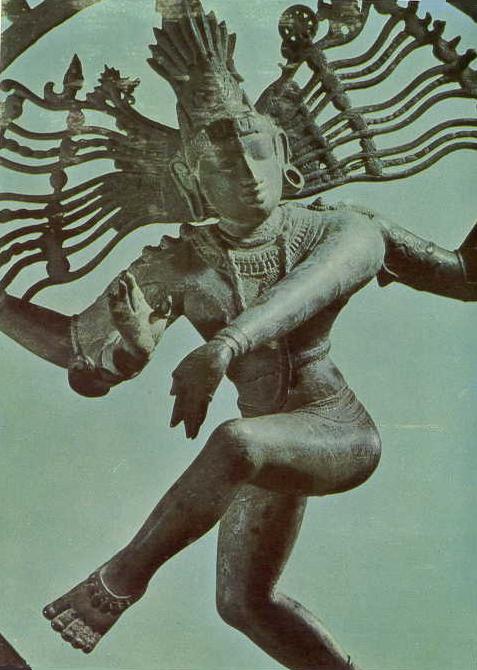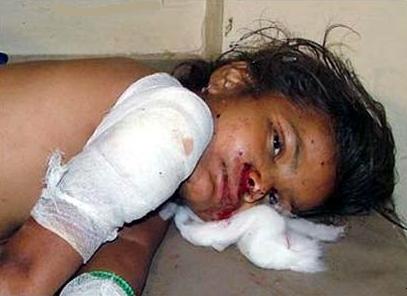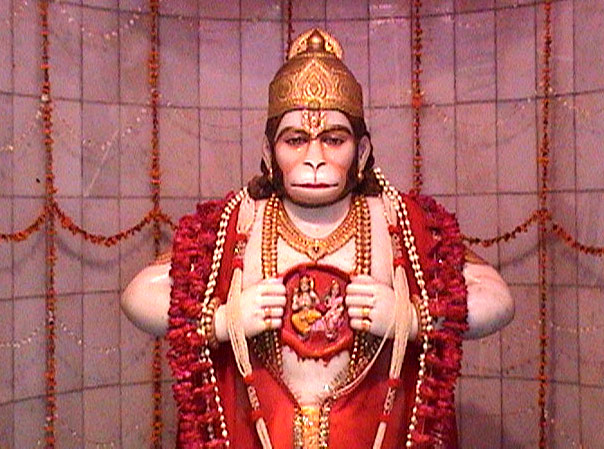|
Page < 1 2 3 4 5 6 7 8 9 10 11 12 13 14 15 >
Death
by a Thousand Cuts
This
week's killing of 35 Hindu villagers in Kashmir is an ugly
reminder of how India is under siege from the forces of terror.
What the country needs is a credible counter terror campaign.
Instead, its citizens get political rhetoric and little else.
India
has come a long way since the gloom of the 1960s, a decade in
which the Chinese military invasion shattered national confidence,
socialism began to fail and U.S. wheat aid gave rise to the image
of a country with a begging bowl. Today, a buoyant India is a
knowledge powerhouse, a nuclear-weapons state and a food exporter.
But it still manifests some of the same weak spots that crippled
it several decades ago.
Nowhere
is India's frailty more apparent than on internal security, which
historically has been its Achilles heel. With one of the world's
highest rates of terrorism, India today is battling underground
extremists on multiple fronts: Pakistan-aided Islamists in Kashmir
and elsewhere; Maoist rebels in a north-south corridor stretching
from Nepal to its southeastern coastline; and separatists in the
restive northeast region between Burma, Bangladesh and
China-annexed Tibet.
The biggest threat India confronts is from
Pakistan-based jihadist groups that are carrying out daring
assaults deep across the border. The
terrorist bombings in New Delhi, Bangalore and the Hindu holy city
of Benares in the past six months were all linked by investigators
to Pakistani
militant groups
The
Jihadists, having ethnically cleansed much of Indian Kashmir of
its Hindu minority, are now targeting the small number of Hindus
that remain in isolated, rugged pockets. Monday's attacks on three
mountainside villages in a border belt were among the worst
massacres in Kashmir in recent years. Prime
Minister Manmohan Singh responded
typically -- with empty rhetoric about the need to fight terror.
But this was not backed by any concrete plans to tackle the
militants. Instead he simply held talks with Kashmiri separatist
politicians Wednesday.
The
latest massacre comes at a time when Mr. Singh's credibility is
under attack in the face of mounting political problems at home.
Faced with bickering in his cabinet, the prime minister is looking
less like a leader and more a manager seeking to keep his
government from unraveling. The expected communist victories in
state elections in West Bengal and Kerala -- where results are
expected next week -- won't help.

Mrs. Sonia Gandhi
is Catholic and PM Manmohan Singh is a Sikh.
The
Jihadists, having ethnically cleansed much of Indian Kashmir of
its Hindu minority, are now targeting the small number of Hindus
that remain in isolated, rugged pockets. India's
former Chief Justice R.C. Lahoti felt compelled to remind fellow
citizens that, "We don't have the political will to fight
terrorism,"
***
Mr. Singh, the latest in
a series of septuagenarians and octogenarians who have led India
since 1989, epitomizes India's leadership deficit. A technocrat
who served as finance minister in the first half of the 1990s, Mr.
Singh became prime minister in 2004 by accident when Congress
Party leader Sonia Gandhi declined to assume that office and
nominated him instead.
India's
former Chief Justice R.C. Lahoti felt compelled to remind fellow
citizens that, "We don't have the political will to fight
terrorism," when he retired from office last October. India
cannot boast of a single successful commando raid to rescue
hostages.
India's
stoic, forbearing approach is now embedded in the national psyche.
It is as if the Indian republic has come to accept terrorist
strikes as the products of its unalterable geography or destiny.
That may help explain why India's laconic response to the
Pakistan-based jihadist groups' strategy to inflict death by a
thousand cuts has been survival by a thousand bandages.
Just as India has come to accept a high level of political
corruption, it is starting to live with a high incidence of
terrorism. Turning this abysmal situation around demands a new
mindset that will not allow India to be continually gored. That
means a readiness to do whatever is necessary to end the terrorist
siege of India.
(source: Death
by a Thousand Cuts - By Brahma Chellaney - The
Wall Street Journal
May 5, 2006).
Top
of Page
Varanasi
- Older than History
A Living Text of Hinduism
 Mark
Twain
(1835-1910) also known as Samuel Clemens, one of the most widely
loved and celebrated American writers since his first books were
released in the late 1860s. Many of his writings have reached the
pinnacles of American and world literature, including the timeless
Adventures
of Huckleberry Finn. Mark
Twain
(1835-1910) also known as Samuel Clemens, one of the most widely
loved and celebrated American writers since his first books were
released in the late 1860s. Many of his writings have reached the
pinnacles of American and world literature, including the timeless
Adventures
of Huckleberry Finn.
He
had quipped:
"Benaras is older than history, older than tradition,
older even than legend and looks twice as old as all of them put
together."
For 2,500 years
this city, also called Varanasi, has attracted pilgrims and
seekers from all over India. Sages, such as the Buddha, Mahavira,
and Shankara, have come here to teach. Young men have come here to
study the Vedas with the city’s great pundits. It antiquity has
caught the imagination of many.
Reverend
M A Sherring ( ? ) a mid-nineteenth-century missionary in
Banaras, who wrote effusively:
“Twenty
five centuries ago, at the least, it was famous. When Babylon was
struggling with Nineveh for supremacy, when Tyre was planting her
colonies, when Athens was growing in strength, before Rome had
become known, or Greece had contended with Persia, or Cyrus had
added luster to the Persian monarchy, or Nebuchadnezzar had
captured Jerusalem, and the inhabitants of Judea had been carried
into captivity, she had already risen to greatness, if not to
glory.”
To
linger in Banaras is to linger in another era, an era which one
cannot quite date by century. It is very old, and yet it has
continued to gather the cumulative Hindu tradition, right to the
present.
Edwin
Arnold ( ? ) called Benaras
"the Oxford and Canterbury of India in one."
 Count
Hermann Keyserling (1880-1946)
philosopher, author, public speaker. He is the first Western
thinker to conceive and promote a planetary culture, beyond
nationalism and cultural ethnocentrism, based on recognition of
the equal value and validity of non-western cultures and
philosophies.
Keyserling founded the School of Wisdom in Darmstadt, Germany
in 1920 based on the original Schools of Wisdom which prospered
over two thousand years ago in Northern India. Count
Hermann Keyserling (1880-1946)
philosopher, author, public speaker. He is the first Western
thinker to conceive and promote a planetary culture, beyond
nationalism and cultural ethnocentrism, based on recognition of
the equal value and validity of non-western cultures and
philosophies.
Keyserling founded the School of Wisdom in Darmstadt, Germany
in 1920 based on the original Schools of Wisdom which prospered
over two thousand years ago in Northern India.
Keyserling
who left Europe shortly before World War I to journey
around the world, wrote an account of the city of Banaras:
"Benares
is holy. Europe, grown superficial, hardly understands such truths
anymore.....I feel nearer here than I have ever done to the heart
of the world; here I feel everyday as if soon, perhaps even today,
I would receive the grace of supreme revelation...The atmosphere
of devotion which hangs above the river is improbable in strength;
stronger than in any church that I have ever visited. Every would
be Christian priest would do well to sacrifice a year of his
theological studies in order to spend his time on the
Ganges; here he would discover what piety means."
(source:
India Travel Diary of a Philosopher –
By Count Hermann Keyserling p. 118 - 122).
***
'O
Mother Ganga, may your water,
abundant blessing of this world,
treasure of Lord Shiva, playful Lord of all the earth,
essence of the scriptures and
embodied goodness of the gods,
May your water, sublime wine of immortality,
Soothe our troubled souls.'
One
of the oldest living cities in the world, Banaras is the holy
place of the Hindus, as significant as Jerusalem is to Jews and
Christians and Mecca is to Muslims. Referred to by Hindus as Kashi
(the Luminous), the city is visited by pilgrims from all over
India, who come to bathe in the River Ganga (Ganges) - many,
indeed, to die on its sacred banks.

"Benaras is older than history, older than tradition,
older even than legend and looks twice as old as all of them put
together." Its
splendid riverfront face has retained its old and ageless
character.
Refer
to chapter on Nature Worship.
***
Banaras
is a magnificent city, rising from the western bank of the River
Ganges, where the river takes a broad crescent sweep toward the
north. There is little in the world to compare with the splendor
of Banaras, seen from the river at dawn.
The rays of the
early morning sun spread across the river and strike the
high-banked face of the city, which Hindus call Kashi – the
Luminous, the City of Light. The temples and shrines, ashrams and
pavilions that stretch along the river for over three miles are
golden in the early morning. They rise majestic on the high
riverbank and cast deep reflections into the waters of the Ganges.
Long flights of
stone steps called Ghats, reaching the roots into the river, bring
thousands of worshippers down to the river to bathe at dawn. In
the narrow lanes at the top of these steps moves the unceasing
earthly drama of life and death, which Hindus call Samsara. But
here, from the perspective of the river, there is a vision of
transcendence and liberation, which Hindus call Moksha.
The riverfront
reveals the sources of Kashi’s ancient reputation as the sacred
city of the Hindus. Along the river there are over seventy bathing
ghats, literally “landings” or “banks,” reaching from Asi
Ghat in the south to Adi Keshava in the north, beyond the bridge.
Bathing in the Ganges, a river said to have fallen from heaven to
earth, is the first act of Banaras pilgrims and a daily rite for
Benaras residents. Along the river are dozens of temples with high
spires, most of them dedicated to Lord
Shiva, who according to tradition, makes this city his
permanent earthly home.

Shiva
Nataraja, Lord of Chidambaram, bronze 12th century. Now in
Rietberg Museum, Zurich.
Watch
Scientific
verification of Vedic knowledge
***
There are
riverside cremation grounds at Harishchandra Ghat and
Manikarnika Ghat, recognizable by the smoke that rises from the pyres of the
dead. Death in Kashi is acclaimed by the tradition as a great
blessing.
Dying here, gains liberation from the earthly round of
Samsara.
(source: Banaras,
City of Light - By Diana L Eck p.1 - 6).
For more refer to chapter on Nature
Worship. Watch History
of Ayodhya - videogoogle.com.
Top
of Page
Islamic
Terrorism at Varanasi - Hinduism's Holiest city
2
blasts rock Varanasi; 20 dead. At least 20 persons were
killed and over 50 injured when two blasts rocked
Varanasi on Tuesday evening.

According to the police, two blasts
occurred almost simultaneously at about 6.30 pm. The first blast
took place at the Sankat Mochan Hanuman
temple that was crowded on Tuesday, believed to be a
special day for Lord Hanuman.
Panic prevailed at the temple
with at least 10 persons dying on the spot while about 40
were wounded. "Ten of the wounded are critical," a
hospital official said.


Victims of
Islamic terrorism in India.
Refer
to Genocide and
Ethnic Cleansing of Kashmiri Hindu Pandits - And the World
Remained Silent - Movie http://www.jaia-bharati.org/films/and-the-world.mpg.
Refer
to video Statistics
on Islamic Terrorism
- By B Raman.
Watch History
of Ayodhya - videogoogle.com.
***
A similar explosion in the waiting area of the Varanasi
railway station followed the temple blast. A bomb went off
outside the station master's room at the railway station, leaving
five dead and about 20 injured. Another live bomb was unearthed in
Gudaulia residential locality. "It was diffused by the
bomb squad," police said.
According to Varanasi Senior
Superintendent of Police Navneet Sikera, "The blasts were big
and we would not rule out more casualties." Ammonium Nitrate
was used in the bombs, official sources said. They were connected
to timer devices that were set to go off in a serial manner.
Sikera also does not rule out a terrorist hand behind the blast.
"What else could it be?" he asked. "I would not be
surprised if it were some kind of a retaliatory act by
Lashkar-e-Tayiba, as we had nabbed one of their agents in Varanasi
in February," Sikera sought to add.
The suspected LeT agent was
handed over to West Bengal police as the Bengal police had alerted
them about the accused.

The Sankat
Mochan temple
is the oldest Hanuman temple in Varanasi.
It is said that Saint Tulsidas
established two temples in Varanasi and this Hanuman temple is of
great value to people who follow the saint's Ramcharita Manas.
"Every Hindu visitor to our
city goes to this temple," Dr Rakesh Mazumdar, a resident of
Varanasi told rediff.com.

Lord Hanuman
who represents devotion, loyalty and hope for millions of Hindus
worldwide.
In India, millions of Hindus are
followers of Bajrangbali (Lord Hanuman) and the Sankat Mochan
temple is a sacred spot for them.
Refer
to Confront
the anti-Hindus: The only way to rescue Hinduism
- By J.G. Arora.
***
In India, millions of Hindus are
followers of Bajrangbali (Lord Hanuman) and the Sankat Mochan
temple is a sacred spot for them. Mazumdar said, "Even Actor Amitabh
Bachchan celebrated wife Jaya's 50th birthday here."
Anil Mishra, a senior journalist
with Hindustan newspaper said, "Residents of Varanasi were
aware of terrorist threats in city. In the last three months,
three Lashkar-e-Tayiba terrorists
were caught and the police knew that city is under risk. But it
looks like not enough security measures have been taken."
The temple is run by the Sankat
Mochan Foundation, which is headed by Veer Bhadra Mishra, who was
named by Time magazine as one of the Heroes of the Planet
in 1999 for his work in cleaning the Ganga river.
***
Mecca
to Varanasi - On 07-03-06 another Hindu city came under Islamic
attack. This time the target was the nerve center of Hinduism the
holy city of Varanasi, also called as Kashi, the city of Lord
Shiva.
More than 25 Hindus died in this Islamic terrorist attack.
"India
is really soft state as we do not capture or punish anybody. In
addition, most of the parties want Muslim votes. So they are
always involved in appeasing them. Where
are leftist and Muslim demonstrators who protested so violently
against Danish cartoons and Bush visit? Should they not
be as vehement in protesting these attacks against Hindus? Hello,
Arundhati Roy, are you sleeping now?"
(source: Controlled
rage greets Varanasi blasts - hindustantimes.com
and Mecca
to Varanasi). Refer to Are
the Hindus Destined to Become an Extinct Race?
By
Ishani Chowdhury.
For
more refer to chapter on Islamic
Onslaught and a
documentary on Hindu temples, refer to The
Lost Temples of India.
Top
of Page
Page < 1 2 3 4 5 6 7 8 9 10 11 12 13 14 15 >
|